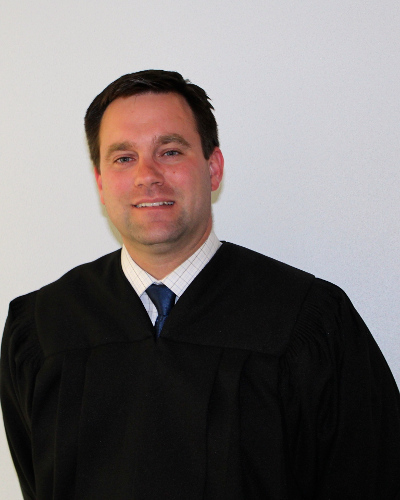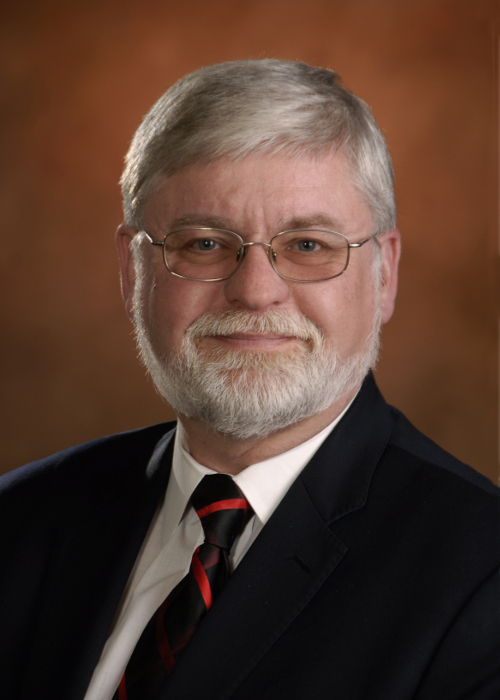 The Honorable Jay McAlpin, Lane County Circuit Court
The Honorable Jay McAlpin, Lane County Circuit Court
Most attorneys work hard to present their cases in a way that minimizes the number of times that the trial judge has to get involved with the presentation of their case. They spend time crafting questions to avoid objections and make plans to forego some objections to opposing counsel’s questions to avoid unnecessary judicial involvement. However, litigators risk unwanted intervention from a trial judge when they ask one witness to “vouch” for the credibility of another witness. In these situations, even the most reluctant trial judge may have to intervene; a long line of appellate cases indicate that in certain circumstances a trial judge has an affirmative obligation to sua sponte involve him or herself into an attorney’s case presentation.
What is vouching?
Broadly defined, vouching is one person giving a personal assurance that something is or is not what it purports to be. Most often, in the legal context, the “something” is truthful testimony. Vouching can be a problem in a number of different ways but the appellate case law has primarily focused on variations on one particular scenario: one witness giving personal assurances about the truthfulness or untruthfulness of another witness’ testimony or statements. In 1983, the Oregon Supreme Court expressly held that “in Oregon a witness, expert or otherwise, may not give an opinion on whether he believes a witness is telling the truth. We reject testimony from a witness about the credibility of another witness [.]” State v. Middleton, 294 Or. 427, 438 (1983). The vouching can either be an explicit opinion (“I have no doubt that Witness #2 is telling the truth.”) or an opinion that implies that another witness is either being truthful or not (“I wouldn’t have called the police if I thought that what Witness #2 told me was true”.)
Where do vouching cases come from?
Since State v. Middleton in 1983, the Oregon Appellate courts have decided approximately fifty-four cases that have involved, at least partially, vouching. By my estimation, eighty percent of those cases have been decided since 2008. Of the fifty-four cases decided since 1993, the vast majority (fifty- two by my count) have either been appeals from criminal convictions or applications for post conviction relief from criminal convictions.
The remaining two cases address vouching in civil cases: one addresses it in the context of pretrial summary judgment and the other applies the criminal case law on vouching in the context of a civil trial. In that case the Court of Appeals held that, where vouching case law is based on the Oregon Rules of Evidence rather than constitutional proscriptions, the court can “discern no principled reason why the court’s OEC 403 balancing analysis in that criminal case should obtain different results in this civil case.” B.A. v. Webb, 253 Or. App. 1 (2012). By applying the criminal standard for vouching to civil cases this one case potentially opens civil litigators to a large, rapidly growing and unfamiliar area of case law.
Who is Vouching for Whom?
As mentioned above, the general proscription is against witnesses, either expert or lay, giving opinions about the truthfulness of another witness. The outlying borders of this general prohibition have been suggested but not clearly delineated over time. For example: A witness asserting under oath that they personally are telling the truth may not be improper. State v. Sanchez-Jacobo, 250 Or. App. 621 (2012). Nor may it be improper, in the vouching context, for a witness to testify to the out of court opinion of a non-witness. State v. Brooks, 247 Or. App. 676 (2012) and State v. Odoms, 313 Or. 76 (1992). Even questions asked to one witness about the demeanor or absence of motives to lie of another witness may be acceptable depending on the context. Easter v. Mills, 239 Or. App. 209 (2010) and Alcazar v. Hill, 195 Or. App. 502 (2004). These cases are all fact specific and, as mentioned, are on the border between acceptable and unacceptable. The civil litigator who isn’t aware of the general rule against vouching and its suggested border is placing him or herself at risk.
Sua Sponte
Litigators risk the sua sponte intervention of the trial judge when they stumble onto a vouching issue. In B.A. v. Webb, the Court of Appeals discussed sua sponte intervention by trial courts by first acknowledging that while “the universe of circumstances in which a trial court is compelled to act, in the absence of a motion or objection by a party, is extremely limited,” the circumstance of one witness vouching for the testimony of another in trial clearly “fall[s] within that ‘extremely limited’ universe.” 253 Or. App. at 10 quoting State v. Reynolds, 250 Or. App. 516, 531 (2012).
The type of intervention that a court is required to make depends on the situation. When facing a vouching situation, a trial court is, at minimum, required to stop a question or line of questions prior to a jury being contaminated with the response. If the response comes before the court can intervene a trial judge should, depending on the circumstances, strike offending testimony from the record, instruct the jury to disregard the testimony or even, sua sponte grant a mistrial.
However, like the general rule against vouching, the trial court’s obligation to sua sponte intervene has its limits. For example: A judge may not be required to sua sponte intervene in a line of questioning if there is a “plausible tactical reason why counsel would have chosen not to object.” State v. Lopez-Cruz, 256 Or. App. 32 37 (2013). Immediately after deciding that testimony is impermissible vouching, a trial judge must decide whether counsel’s decision not to object was made in furtherance of a plausible strategy evidenced by a consistent course of action during the trial. State v. Ramirez-Estrada, 260 Or. App. 312 (2013). It appears that “a plausible tactical reason” is more likely to be found in situations where the party hurt by the vouching testimony elicits the testimony themselves. State v. Lowell, 249 Or. App 364 (2012), State v. Hollywood, 250 Or. App. 675 (2012), and State v. Higgins, 258 Or. App. 177 (2013). But a “plausible tactical reason” has been found when foregoing an objection to vouching was consistent with a clear strategy that began with opening statements. State v. Salas-Juarez, 264 Or. App. __, (July 2, 2014). When making the decision to forgo objecting to vouching testimony an attorney should, starting with pretrial and opening statements, make their strategy known to the court.
Due to the wide disparity between the amount of criminal case law and the amount of civil case law regarding vouching many civil litigators may be unaware of the risk they face when eliciting vouching testimony. Litigators who handle cases involving sexual abuse or psychological injuries may be doing their clients a disservice by not being aware of this issue. But, as in all evolving areas of the law, the amount of cases and their relative recentness provides a prepared litigator with opportunities for creative advocacy.
 The Honorable Youlee Yim You, Circuit Judge Multnomah County Circuit Court
The Honorable Youlee Yim You, Circuit Judge Multnomah County Circuit Court The Honorable Katherine E. Tennyson, Circuit Judge Multnomah County Circuit Court
The Honorable Katherine E. Tennyson, Circuit Judge Multnomah County Circuit Court The Honorable Daniel R. Murphy, Circuit Judge, Linn County Circuit Court
The Honorable Daniel R. Murphy, Circuit Judge, Linn County Circuit Court The Honorable Jay McAlpin, Lane County Circuit Court
The Honorable Jay McAlpin, Lane County Circuit Court The Honorable Paula Brownhill, Clatsop County Circuit Court
The Honorable Paula Brownhill, Clatsop County Circuit Court